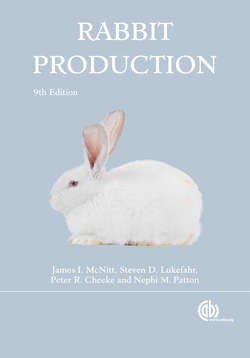Читать книгу Rabbit Production - James I McNitt - Страница 58
На сайте Литреса книга снята с продажи.
Care of Young Litters
ОглавлениеFollowing kindling, the litter should be inspected and any dead or deformed young removed. If this inspection is done quietly after the doe has left the nest box, the doe will not be disturbed and there is no danger of her injuring the young. Examine the kits to make sure they have nursed, as will be shown by full stomachs. A full stomach appears as a white band (the so-called milk line) seen beneath the surface of the abdominal skin (Fig. 5.12). If a doe does not feed her litter or has not produced enough milk, the litter should be fostered to other lactating does. Does that repeat this abnormal behavior with the next litter should be culled.
Fig. 5.12. One-day-old kits. The one on the left is a “starve out” which has not nursed, whereas the one on the right has a full stomach. Kits that have nursed have a visible “milk line” in their stomachs. (Courtesy of H. Ch. Loliger)
Occasionally the kits will become separated and will form two groups within the nest box. With small kits, there is danger that only one group will be fed. When this happens and one group of kits does not appear to be cared for, rearrange the bedding into one nest, with the depth of the nest and the fur covering regulated to keep the young comfortable. A large litter sometimes becomes split, but the doe cares equally well for both groups. If this is the case, no intervention is required. Make sure that there is bedding under the young and that there is good drainage from the nest box. If there are too many in the litter, transfer some to other litters (fostering), or if there are too few, bring in young from other litters. Fostering should be done a day or two following kindling and between litters that do not vary more than one to three days in age. Some does will accept kits of varying ages. The goal should be to form nursing groups of similarly sized kits with no more kits than available nipples.
Sometimes a doe fails to pull enough fur to cover her litter during cold weather. When you discover this, add fur from another litter or pluck fur from the doe’s body to cover the young before they are chilled. The fur is easily plucked at kindling time. If the temperatures are high and the doe pulls an excessive amount of fur, adjust the covering to the quantity needed to keep the newborn litter comfortable and save the surplus fur for an emergency when more may be needed for other litters. Inspect the litter periodically to make sure that the nest remains warm and dry and those dead kits are promptly removed.
